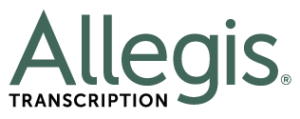Recorded Statement Transcriptions: The Basics
With the flurry of insurance claims due to accidents that insurers receive every day, companies are always looking for ways to, not only streamline the process, but also offload some of the work where they can.
A claims adjuster in an insurance company might well benefit from support in their own investigations — and a simple but practical way to do this is to use a recorded statement transcription.
What is a recorded statement transcription?
A recorded statement transcription is an integral part of the claims file. It is an interview that takes place between the claims adjuster and the injured party, as well as any witness statements involved.
Procuring these sets of transcriptions is the key to successful “subrogation” recovery — and subrogation is essentially what occurs when an insurance company stands to ‘pay out’ or be held liable for paying out the claims being filed.
The good news is that the advancements in audio recording quality and technology, along with options for faster, more streamlined and cost-effective transcription services, allow claims adjusters to rely on this key aspect of claims investigations without actually having to focus on the process of creating a transcription.
Why do insurance adjusters ask for a recorded statement?
Once a claim has been filed by an injured party, substantiating the claim and then assuming the financial payout becomes the insurer’s responsibility.
Subrogation issues occur when someone has been injured and another person or party is either found to be at fault or ‘stands in’ for the payment or the debt of this payment.
In this case, it would be the insurer.
This means that it’s up to insurers (and claims adjusters) to substantiate, not just the veracity of the claim, but also who is at fault and just how much the payout will be. Insurers might also want to look at whether the injured party is planning to sue someone else. If there is a third party, this would take some of the financial burden off the insurer’s back.
Clearly, then, recorded statements are a key part of determining the “who, what, where, when, and how” details of a situation behind a claim.
Forming a complete case file
Claims adjusters rely not only on information, they also depend on a cohesive timeline and a collection of information points that form a story. Recorded statement transcriptions are the key to crafting a timeline of events from multiple perspectives.
As the voices and narratives of each party start to emerge, the claims adjuster can begin to verify, validate, substantiate or completely debunk the story that is being told or the reasoning behind the claim.
Forming a complete case file is not just about hard data — it’s about how these pieces of information are used.
Comparing complete statements against other sources
Once claims adjusters have these audio statements transcribed, they can begin the process of substantiating the claims before any decisions are even made.
This will require them to contrast transcriptions against police statements, witness statements and any medical information from emergency responders or paramedics. They can compare these documents side by side, ensuring that the version of events more or less matches up.
Transcriptions are also an excellent and incisive way to track how stories change over time. Witness testimony (and even testimony from the injured party) is known to sometimes change over time. An individual can feel they are “misremembering” certain things or can, over time, claim to have recovered a “deeper memory” of what happened.
Some of these story changes are not only minor, they’re simply an unavoidable function of time. Using details in the transcription against other sources, claims adjusters can tell where deviations or “additions” are minor and where they could indicate the potential for fraud.
Detecting anomalies later on
Which leads to the next point: Transcriptions are indeed useful documents to have on hand, referring back to them to verify the utility and veracity of other sources and vice versa.
But remember that these are recorded statements — and these statements are set in stone. Once there is a hard-copy, transcribed text sitting with a claims adjuster (and an audio file close at hand), it becomes incredibly easy to spot holes in the story.
Even if there’s no intentional fraud or malice and an individual (the injured party) simply misremembered due to shock, it’s often the details that claims adjusters hang the hats of their decisions on.
How Do Recorded Statements Proceed?
Likely, the adjuster will call the parties involved and ask for a scheduled time to speak. Sometimes, these calls (and subsequent recordings) can be spontaneous.
If it is a scheduled call, the respondent will need to make sure they adequately explain what actually happened. Reviewing dates, street names and any details of the incident (or accident), should be part of the process.
Once the recording is complete, an individual assigned to transcribe the recorded statement will start to go through the audio recording of the statements, transcribing in full the details of the respondent’s “version” of events.
Even though the recorded statement transcription will always be available going forward, the audio recording is also easily accessible, especially if the case files on the claim are transferred across departments or a new adjuster takes over.
What Questions Will Be Asked?
The structure and progression of the questions start off as standard. Basic information includes names and residential addresses. These demographic-type questions help break the ice and allow the adjuster to check that these personal and confidential pieces of information are true.
Once these details are transcribed in a recorded statement transcription, the adjuster can then follow up with a background check. These are the kinds of double-checking motions that recorded statement transcriptions can support.
Demographic questions are then followed by open-ended questions that ask about the introduction of the situation. These can be phrased as, “Tell me about where you were going before the accident happened?”
The purpose of open-ended questions is so that an adjuster, when reading back over the transcription, can see where there are obvious holes in the story or where the individual may have actually contributed to the situation.
Insurers will also want to know about medical details like medical history, accident history, any treatments that are ongoing, health insurance, and witness information.
While it may not seem so significant at first glance, consider that a claims adjuster’s job deals entirely with given information. That’s why recorded statements are best reviewed and used in transcription form. This is information that needs to be used as evidence, which is then later used to make decisions on whether to substantiate the accident claim and provide a payout.





This is an excellent description of a recorded statement. I transcribed hundreds of these during my employment with Selective and before that. They were my favorite part of my job.